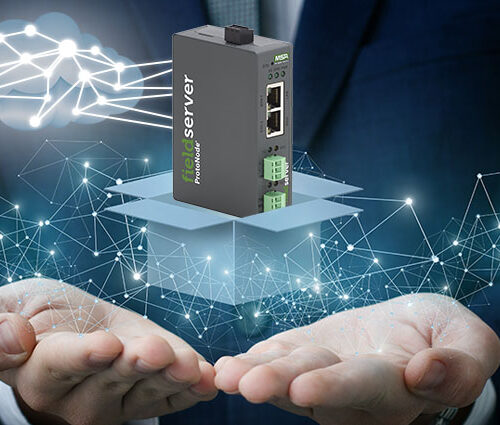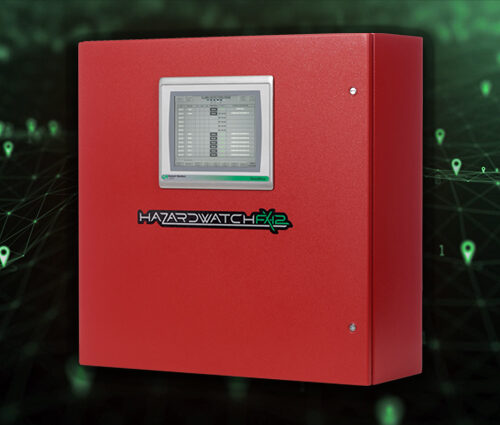
Energy management is a full-time, pressure-filled job for building owners and facilities managers. Add in the transition to sustainable energy and the stakes go even higher.
Plus, with an increase in the frequency and duration of power outages, as well as a rise in climate change-induced weather events, more and more energy outages and power disruptions are coming.
As such, when the inevitable power outage does happen, backup power readiness is not only a necessity, it’s an imperative.
Safety First
Whether you’re faced with a power outage in a commercial building, across a corporate or educational campus, or in an institutional facility, convention center or retail complex, the number one priority, of course, is occupant safety.
That’s where Building Automation Systems (BAS) come in, enabling you to activate and control uninterrupted power supply (UPS) backup systems for emergency energy, lighting, fire alarm, and security monitoring.
Challenges of Dealing with Commercial Building Power Outages
-
No Reliable Supply of Back-Up Power Generation
Being resilient in the face of an emergency requires a plan. Your plan could include gas- or wind-powered generators, solar panels, power meters, electrical switch gear systems or battery UPS.
The challenge comes when you don’t have a reliable and connected source of backup power. Without it, you’re hard pressed to ensure the well-being of your building occupants, visitors, and staff. There’s a big difference, though, between having these systems in place and being confident they’ll work when you need them most.
How to solve it:
Install cutting-edge emergency lighting inverters like these to transition fast to emergency power and minimize disruptions. Having industrial-grade inverters with circuitry designed to convert AC power from the grid will enable you to power up electrical devices and systems, including emergency lighting.
-
Outdated and/or Time-Constricted Emergency Power Systems
Emergency power systems are complex. Devices, components, and connected systems for everyday power and emergency backup power requires continuous monitoring and maintenance. So, when components fail, age out, become obsolete, or no longer comply with local and national building codes, both capacity and resiliency are put at risk.
How to solve it:
Repair devices and systems or replace them with standby power solutions. For example, swap out battery-pack flashlight-type emergency lights for transfer devices that are compliant with National Electric Code Article 700. Opt for transfer devices that are specifically designed to automatically turn existing architectural lighting into illuminated emergency egress lighting.
Here are some key reasons to replace wall-mounted battery systems sooner rather than later:
- Battery system lighting is notoriously dim, which poses a potential safety hazard.
- Battery-operated emergency lighting only lasts for so long. In fact, most battery-pack systems only work for 90 to 120 minutes, which is less than the standard electrical outage duration reported by the U.S. Energy Information Administration (EIA).
- The ROI for battery-pack emergency systems is lower, in light of the cost of ongoing manual inspection, additional maintenance requirements, and frequent battery replacement.
Lastly, pair emergency architectural lighting solutions with an IoT gateway like the MSA FieldServer ProtoNode. Not only does this allow you to operate devices that are supplied by backup power systems from anywhere at anytime, it also means you control when and where to activate the emergency lighting, such as near an interior door, in a mechanical room, or along hallways, stairs, and exit points.
-
Lack of Real-Time Data at the Edge
For some building owners and managers, it isn’t easy to manage large amounts of data at the edge. The fact is, more data doesn’t equate to usable data—unless and until the data is processed and becomes actionable, helping you understand the “who,” “what” and “where” of each relevant data point.
How to solve it:
Choose a solution that features sophisticated self-diagnostics and event log tracking. The right power inverter can empower you to track normal operational data as well as power outage events. And the right IIoT gateway and Cloud solution can make storing and accessing data in the Cloud both accessible and highly secure. Remember: This is crucial data you need to support for routine Fire Marshal inspections. Without real-time tracking and secure Cloud storage, you’ll be forced to rely on inconvenient and potentially inaccurate paper logbooks and cumbersome, error-prone binders.
Benefits of a Connected BAS with IIoT Gateway Solution
Whether you’re working within your normal daily operations or contending with an emergency power situation, state-of-the-art diagnostics, log tracking data, and communication capabilities can make all the difference when it comes to activating and optimizing your energy saving systems and lighting sources.
In addition to emergency lighting inverters and transfer devices, the ProtoNode is a fully configurable building and industrial automation IIoT gateway that easily connects your lighting systems, emergency power solutions, and energy devices—including UPS, gas- and wind-powered generators, solar panels, power meters and electrical switch gear systems—to your network, and your network to the Cloud.

Supporting up to 1,000 data points, ProtoNode enables remote and secure access to the FS-GUI application, which is available locally on the ProtoNode. So, even without a power outage, you’ll have continual access to the status of your standby systems.
This means you’ll have early warning of any potential malfunction or failure of your UPS or other backup power systems so you can ready them before the literal and proverbial storm hits.
Like other FieldServer protocol gateway products and MSA Cloud solutions, ProtoNode supports more than 140 protocols for both commercial and industrial facilities allowing you to connect to traditional backup and alternate power sources.
If you’re looking for an advanced automation solution to meet your building power and lighting needs (normal and emergency), contact us or reach out to one of your local distributors for a quote.







